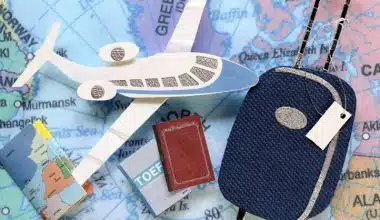As locals and visitors alike get ready for nature’s unexpected energies, hurricane season in New Orleans is a mixture of amazement and dread. This time frame, which runs from June to November, adds a fresh dimension of unpredictability to the bustling metropolis. From late August to early September, there is a surge in activity, and there is a greater chance of tropical cyclone formation and strengthening. Tropical cyclones in the Atlantic Ocean and the Gulf of Mexico, which create conducive conditions for hurricane development, are extremely dangerous to New Orleans.
Some regions in New Orleans are especially vulnerable to hurricane effects during hurricane season. These include regions that are prone to flash floods, temporary outdoor structures, locations close to waterways, mobile home and RV parks, levee systems, historic cemeteries, coastal areas, islands, and barrier beaches. They also include low-lying areas and flood zones, coastal areas, islands, and outdoor recreation sites. Particularly at risk are low-lying places, coastal regions, islands, barrier beaches, and regions close to rivers.
When Is Hurricane Season in New Orleans?
Every year, from early June to late November, New Orleans has a hurricane season. In this region, late August to early September tends to be when hurricane activity is at its highest. Throughout this time, storms could develop at any moment, so keep informed and get ready for possible hurricanes or tropical storms.
Features of Hurricane Season in New Orleans
Hurricane season is a special yearly challenge for New Orleans. The city and its inhabitants must navigate several weather-related aspects during this time. To guarantee their safety and the safety of their property during hurricane season, New Orleans residents must be educated, obey government warnings and instructions, and make the required preparations.
The following are the characteristics of hurricane season in New Orleans:
#1. Duration
In New Orleans, the hurricane season lasts from June 1 to November 30 every year. The region is most vulnerable to tropical cyclones, such as hurricanes and tropical storms, during these six months.
#2. Peak Activity
In late August or early September, New Orleans often has its highest level of storm activity. During this period, tropical cyclone formation and intensification are most likely to occur, and there is a greater chance that severe weather conditions like high winds, torrential rain, and storm surges will develop.
#3. Threats
Threats to New Orleans come from tropical storms that develop in both the Atlantic and Gulf of Mexico. Due to the city’s vulnerability to storm impacts, the warm waters of the Gulf of Mexico are ideal for the development and intensification of hurricanes.
#4. Storm Surge
Storm surge is one of the major dangers in New Orleans during hurricane season. It is the unnatural rise in water that a storm causes, and it has the potential to cause significant flooding in low-lying areas, particularly close to the coast.
#5. Tropical Storms
During the hurricane season, tropical storms that are not hurricanes also have an impact on New Orleans. Although tropical storms have slower wind speeds than hurricanes, they nevertheless have the potential to cause flooding by dropping a lot of rain and having powerful winds.
#6. Wind Damage
Hurricanes and tropical storms can generate strong winds that can damage buildings, trees, and electrical lines. In addition to the possibility of flying debris endangering people and property, high winds can also cause property damage, power outages, and other problems.
#7. Flooding and Rainfall
Hurricanes and tropical storms frequently dump a lot of rain on the area. The city’s low-lying terrain and heavy rain can combine to cause extensive floods. Road closures, property damage, and infrastructure and transportation problems could result from this.
#8. Orders for Evacuation
During hurricanes or tropical storms, local authorities in New Orleans may issue evacuation orders to protect locals and lessen the risk of storm surges, floods, and other dangerous situations.
#9. Impact on Infrastructure
Hurricanes and tropical storms can cause significant damage to infrastructure such as roads, bridges, energy grids, and communication networks. After a storm, authorities must inspect and repair the infrastructure because any damage could stop essential services and impede emergency response efforts.
#10. Post-Storm Recovery
The recovery process starts after a hurricane or tropical storm has passed. This includes removing debris, reestablishing power and utilities, assessing and fixing home and building damage, and offering assistance to the impacted people and communities. Depending on how severe the storm was, the length and complexity of the recovery process can change.
Hurricane Season Preparations in New Orleans
Being ready is essential when a hurricane is imminent. It’s essential to arm yourself with the knowledge and resources necessary to protect your family and home as hurricane season draws closer. Every hurricane season may be different; therefore, it’s crucial to adjust and be ready.
Here are some suggestions for staying safe:
#1. Stay Informed
Reliable sources like the National Hurricane Center (NHC) and local authorities should be consulted for the most recent weather forecasts and hurricane alerts. Keep up with news updates and pay attention to any emergency or evacuation orders.
#2. Create an emergency plan
Create a thorough emergency plan for your family and yourself. Establish a communication strategy, decide on meeting locations, and talk about evacuation routes. Make sure everyone is aware of what to do in an emergency.
#3. Put together an emergency kit.
A first aid kit, non-perishable food, water, prescriptions, flashlights, batteries, and critical papers should all be included in an emergency kit. Don’t forget to include provisions for your animals as well.
#4. Protect your home
Trim trees, lock outdoor furniture, reinforce doors and windows, and put up hurricane shutters or impact-resistant glass to safeguard your property.
#5. Be ready in case of power outages
Power outages brought on by hurricanes can continue for days if not weeks. Possess backup power sources, such as a generator or battery-operated gadgets. Stock up on additional batteries and keep non-perishable food on hand that doesn’t need to be cooked.
#6. Planning an evacuation
Recognize the localized evacuation routes and the locations of the closest shelters. If you receive a warning to evacuate, follow it right away and only bring what is necessary. Plan ahead because not all shelters will accept pets.
#7. Secure Important Documents
Securely keep critical documents, including identification, insurance policies, birth certificates, and financial data, digitally or in waterproof containers. Think about creating duplicates and storing them somewhere else.
#8. Learn basic first aid
Learn CPR and basic first aid. Emergency medical services could be unavailable or delayed during a hurricane. In an emergency, having the skills to administer quick medical care can be essential.
#9. Get your vehicle ready
If you must leave by automobile, make sure it is in good working order. During hurricane season, keep the gas tank full and keep emergency gear like a spare tire, a jack, and a roadside emergency kit in your car.
#10. Comply with Directions
During a hurricane, abide by the directions and instructions given by local authorities. If instructed to evacuate or take specific action, respond quickly and adhere to the suggested safety precautions. To protect your safety, keep up with official announcements.
Hurricane-Prone Areas in New Orleans
During hurricane season, tourists should avoid particular areas of New Orleans because storms are more likely to hit them.
Here are some things to watch out for:
#1. Low-lying areas and flood zones
Because of its location below sea level, New Orleans is renowned for being susceptible to flooding during hurricanes. Particularly vulnerable areas include sections of Lakeview and the Lower Ninth Ward. During hurricane season, tourists should stay away from these regions and not visit them.
#2. Coastline regions
Strong winds and storm surges are more likely to affect the Gulf of Mexico’s shoreline and the adjacent coastal regions of New Orleans. Grand Isle and portions of the Louisiana coastline are examples of well-known tourist spots in this category. Avoid traveling to these regions during storm season.
#3. Islands and barrier beaches
The Chandeleur Islands and the barrier islands of the Mississippi Gulf Coast are two examples of islands and barrier beaches that are susceptible to storm effects. It is advisable to stay away from these regions during hurricane season, as they can be inaccessible or dangerous.
#4. Regions at risk of flash flooding
In some places, flash flooding from hurricane-related heavy rain can occur. Travelers should use caution and stay away from low-lying places, underpasses, and streets with poor drainage because these locations can easily become impassable during heavy rain.
#5. Temporary outdoor structures
Avoid using tents, canopies, and other temporary outdoor buildings, as well as outdoor gathering places, during hurricane season. Visitors’ safety is put at risk because these buildings are more vulnerable to harm from severe winds and torrential rain.
#6. Areas near waterways
During hurricane season, avoid areas close to rivers, canals, and other bodies of water. Increased water levels, flooding, and possible dangers like floating debris can all occur in these places.
#7. Mobile homes and RV parks
Be careful during hurricane season while driving a recreational vehicle or staying in a mobile home. These buildings may not offer sufficient storm protection since they are more susceptible to destruction from high winds.
#8. Levee systems
Levees and floodwalls form a vast network that shields New Orleans from flooding. Levee breaches or overtopping during a strong hurricane, on the other hand, could result in substantial flooding. Avoiding regions close to levees is advised, especially if there are any signs of possible breaches or evacuations.
#9. Historic cemeteries
Although New Orleans’ historic cemeteries are well-known, hurricanes can make them dangerous. Visitors face risks from falling trees and other debris, and flooding may occur in low-lying areas. It is advised to avoid going to cemeteries during stormy weather.
#10. Parks and other outdoor recreation areas
Avoid parks and outdoor leisure areas like City Park and Audubon Park during hurricane season. Due to the possibility of flash flooding, flying debris, and falling trees, these regions may become dangerous.
What Month Has the Most Hurricanes in New Orleans?
In the Gulf, including New Orleans, the months of August and September are the most active. The height of hurricane season is thought to be during these months. But it’s crucial to remember that hurricanes can strike at any time between June 1 and November 30 because of the hurricane season. To guarantee safety during hurricane events, it is recommended to follow local authorities’ instructions and stay up-to-date on weather forecasts.
What Is the Best Month to Go to New Orleans?
In terms of weather and crowd levels, early spring (March through April) and late fall (October through November) are typically the ideal times to visit New Orleans. Compared to the busiest summer months, these months provide pleasant, cool weather and fewer visitors. These times of year are ideal for sightseeing because they strike a decent balance between manageable tourist numbers and agreeable temperatures.
In What Months Do Hurricanes Hit Louisiana?
During the Atlantic hurricane season, which lasts from June 1 to November 30, hurricanes can strike Louisiana at any time. However, August and September are the months when the state is most at risk from storms. Although hurricane activity in the area is thought to be at its highest during these months, hurricanes can form at any point throughout the season.
What Month Is Worst for Hurricanes?
The Atlantic basin, which includes the United States, considers September to be the month with the worst hurricane activity. The biggest number of storms and hurricanes occur during this month, which is the height of the Atlantic hurricane season. In the Atlantic region, September experienced the highest number of storms in recorded history between 1851 and 2020.
What Is the Cheapest Month to Go to New Orleans?
Visiting New Orleans is most affordable in June, July, August, and September. In comparison to other times of the year, hotel and flight costs are typically lower during the summer months. But New Orleans’ summers may get quite warm and muggy. The months of October and December can also be more affordable if you’re seeking a place with both affordable lodging and nicer weather.
What Is the Coldest Month in New Orleans?
January is the coldest month in New Orleans. January’s average low temperature is around 48°F (9°C), while the average high is 63°F (17°C). These numbers are averages; real temperatures may be higher. It’s a good idea to bring clothes and be ready for chilly weather if you’re going to New Orleans in the winter.
Conclusion
To protect people and property, New Orleans must be prepared for hurricanes. As well as developing an emergency plan, putting together an emergency kit, protecting your home, getting ready for power outages, organizing an evacuation, safeguarding vital documents, learning basic first aid, and preparing your vehicle, staying informed about weather predictions and advisories is crucial. It is imperative to comply with local authorities’ directives, including staying informed of official notifications and evacuating as directed.
- BEST TIME TO CRUISE THE CARIBBEAN
- WHEN IS HURRICANE SEASON IN PUERTO RICO? All You Need To Know
- WEATHER IN HAWAII IN AUGUST: Best Places Visit
- WEATHER IN ITALY IN NOVEMBER, PLACES TO VISIT AND WHAT TO WEAR
- Best Places to Live in Montana 2023: All You Need






